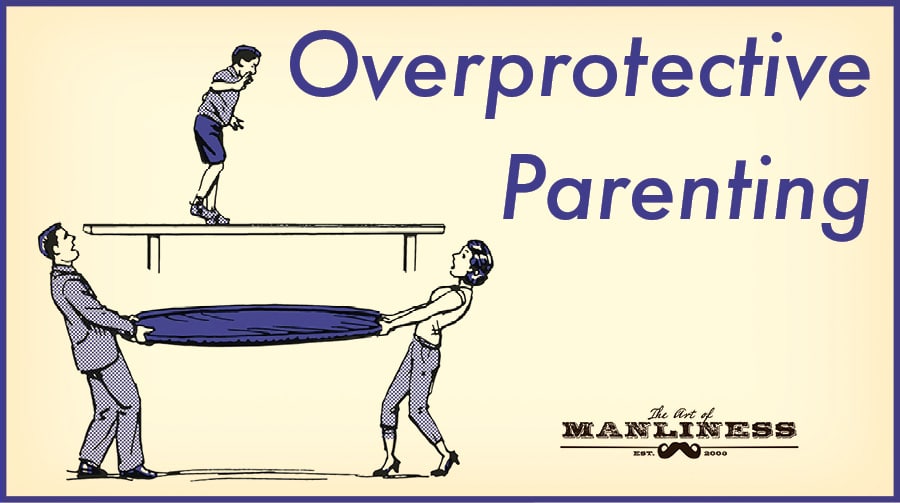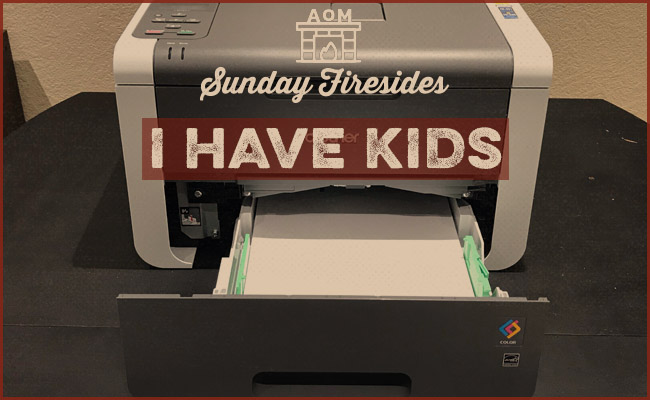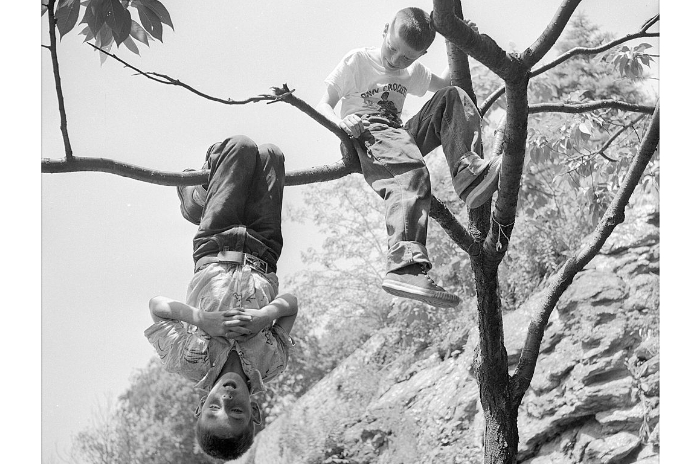
In the last installment of this series on the causes and effects of the modern trend towards overprotective parenting, we explored the evidence behind the biggest reason parents give for adopting this approach and abandoning the more “free range” method they were reared with themselves: that the world today is more dangerous than it once was.
We showed that not only was the risk of a child becoming the victim of an accident or crime extremely low several decades ago, it’s even lower now. We also discussed the fact that the tiny risk that still does exist seems impossible to completely counter, no matter how strenuously we try; the sheer randomness of the world ensures that some tragedies are simply beyond human control.
Nonetheless, as long as some risk, no matter how infinitesimally small or impossible to influence remains, many parents feel driven to do everything in their power to mitigate it, on the chance that their efforts can somehow tip the odds, or, more realistically, simply because it feels better to know you’ve done all you can to keep your kids safe.
That might be a reasonable approach to take to parenting, if such hyper vigilance did not produce any downsides and risks of its own.
But it does.
What isn’t typically appreciated concerning risk management, is that when you control for one kind of danger, sometimes another kind emerges in its place.
In trying to prevent some types of risks in our children’s lives — not only concerning injury or death, but the failure to maximize their full potential and talent — we expose them to another.
These risks provoke a less visceral response, because their danger happens in slow motion, over a long period of time. Nonetheless, their physical, mental, and emotional effects can be just as real, and profoundly detrimental.
The Risks of NOT Letting Your Kids Do Risky Things
The risk of children failing to develop the ability to take initiative or be a self-starter.
Children today have nine fewer hours of free time a week than kids thirty years ago did. The time at their disposal has been eaten up by extracurricular activities — sports, music classes, tutoring, etc. And when kids aren’t participating in structured activities, they’re typically hanging out with their parents, who don’t want their children going off to play by themselves. The vast majority of their days and nights are thus spent under the supervision of adults — parents, teachers, coaches — who tell them what to do, and when and how to do it.
Without the experience of being engaged in unstructured play, away from the watchful gaze of grownups, kids fail to learn how to entertain themselves, how to be self-directed, how to figure out how to spend their time. Remember when you had the afternoon before you, and decided whether to ride your bike to a nearby school, or explore a construction site, or start a circus in your backyard? How many kids today are having that experience where they’re the ones who initiate and carry out their own activities?
It’s no wonder that one of the biggest things young adults struggle with today is being self-starters. Once they’re out of college, and the structures of their childhood and adolescence have been pulled out from beneath them, they feel adrift, waiting in vain for someone to direct their path and tell them which steps to take next.
If children aren’t allowed to direct their youthful play time, how will they direct the course of their grownup relationships, hobbies, and careers?
The risk of an impoverished imagination.
I’ve got some good kids. They’re smart, pretty well-behaved, and fun. I wouldn’t call them particularly imaginative, though. They don’t much seem to engage in the kind of pretend play I remember absorbing myself in as a kid. In fact, they often seem weirdly literal for a 3-year-old and a 6-year-old.
Maybe it’s a result of the “screen time” they’ve gotten (guilty), and the fact that as mentioned in a previous installment, we’ve been so hands-on and omnipresent in their lives; they haven’t had as much of a chance to break off from the world of adults and enter in the fantastical world of children. Perhaps it’s another unintended consequence of the lack of free time just mentioned — structured activities come with predetermined parts, guidelines, ends; they require only a fraction of the creativity called upon by more open-ended play.
It’s not just that the activities of modern children are more structured either, but that their toys are too. Left to their own devices, children must make use of “loose parts” in the environment, seeing in them numerous possibilities, and making up their own rules for how the world works — a stick becomes a sword; dirt clods become grenades; the driveway becomes lava.
In contrast, the toys given children these days have a preset and very explicit built-in function. It seems that for toymakers (and their parental customers) “fun” is not a sufficient purpose for a toy; instead they consistently tout their playthings’ educational qualities. Yet by designing toys to be “brain boosters,” their use becomes fixed — a wagon can be played with in an infinite number of ways; a gadget where you press a button to learn numbers can be “played” with by pressing buttons to learn numbers. Such structured toys may enhance one aspect of children’s cognitive abilities, but it leaves fallow their capacity for imagination.
The result of this emphasis on structured, educationally-focused play is a generation of young people who are like my kids: capable of smart thinking, but only along narrow lines. In a study titled “The Creativity Crisis” Kyung Hee Kim notes that while intelligence and SAT scores have been rising in the last couple decades, scores on tests of creativity have declined, so that:
“over the last 20 years, children have become less emotionally expressive, less energetic, less talkative and verbally expressive, less humorous, less imaginative, less unconventional, less lively and passionate, less perceptive, less apt to connect seemingly irrelevant things, less synthesizing, and less likely to see things from a different angle.”
The most significant decline has been seen in “Elaboration” scores, which test people’s ability to take existing ideas, reflect on them, and then build on them in new ways.
It’s the kind of ability that grows not from looking at a screen where X=X, but navigating an open environment where X might equal Y or Z or D. Where a pinecone becomes a telephone; a rock, a fossil; a hollow tree, a hideout.
The risk of childhood (and adulthood) obesity.
Jane Clark, a professor of kinesiology, calls today’s crop of children “containerized kids.”
Babies and little children start life not only strapped into car seats, but fastened into high chairs for feeding, wedged into infant armchairs for watching TV, and buckled into strollers for walks and jogs around the neighborhood.
Some of this “containerizing” is necessary for safety, but it’s also making children much more sedentary. According to one study which tracked the movement of toddlers, the average 3-year-old is active for a minuscule 20 minutes a day!
As children get older, their container gets larger, but not by much; parents, who prefer the safety of the great indoors to the risk outside, functionally keep their kids under “house arrest.” Some research has shown that less than a third of American children play outside on a daily basis, while another survey found that 1 in 2 kids worldwide play outside for less than an hour a day — less time, it might be pointed out, than inmates spend outside at maximum security prisons.
While both the domestic wards and their wardens are happy — kids like staying curled up with their screens, and parents like knowing exactly where there are at all times — the more time children spend within four walls, the less time they spend moving their bodies.
Anecdotally, I can tell you that when my kids are inside, they’re much more sedentary, draping themselves over furniture and whimpering with boredom. Put outside however, it’s like the sun immediately charges up their solar-powered batteries, and they come alive with activity.
The rise in containerizing children, whether in buckled seats or relatively spacious homes, has thus unsurprisingly paralleled a rise in childhood obesity, which has more than tripled since the 1970s.
Parents often think they can counter this trend, and get the best of both physical activity and close supervision by placing their children in organized sports. Yet, ironically enough, the popularity of organized sports has expanded at the same time as children’s waistlines. Enrollment in peewee soccer does not seem to be a cure-all for keeping childhood obesity at bay.
This may be because organized sports, at least for young kids, can often be surprisingly sedentary affairs. There’s a lot of standing around being confused, punctuated with a little activity, followed with snacks and unearned Gatorade. In contrast, when kids play by themselves, in unstructured ways, in games of their own design, they actually seem to move more. I know my son Gus is a lot more active even when he’s simply shooting hoops by himself than when he’s at tee-ball practice.
While parents often think children are so full of energy their activity level will take care of itself, this is only true when artificial and unnecessary barriers to this activity are removed, and children are left to their own devices and allowed to roam and range. Stored away, all batteries corrode.
In keeping kids from the imaginary boogeymen outside, parents are blind to the silent “killer” within, which packs on pounds that children may carry with them into adulthood, and which may even eventually cut short the very life mom and dad worked so hard to preserve.
The risk of children failing to achieve full physical competence.
Lower levels of movement and activity not only run the risk of making children obese, but also stymy the development of their physical abilities.
Though we rarely think of them as such, all movements — whether running, jumping, crawling, throwing, balancing, etc. — are skills. And as skills, they require embodied practice to really master.
Research shows that the more active a child is, the more their motor skills improve, and that the environment plays an important role in enhancing this process. For example, studies done in Norway and Sweden found that children who played daily in more natural areas — landscapes of uneven ground, rocks, and trees — developed greater balance, agility, and all-around mobility than those who played on a safer, flatter, more structured playground. The more challenging and unpredictable the context of play, the more it strengthens physical competence; greater risks bring greater rewards.
Unfortunately, the landscapes of play and exercise for children have been both literally and metaphorically flattened, if they exist at all. As many as 40% of schools have either eliminated one or all of their recess periods, not simply to gain more classroom and testing time, but also because of liability concerns. For the same reason, climbing ropes and dodge ball games have been removed from gym class. The risk of someone getting hurt is too high; the risk of physical ineptitude doesn’t rate, even though it’s correlated with the risk of obesity.
Studies show that the relationship between motor skill development and obesity can form either a positive or negative feedback loop. Children with higher motor skills tend to be more active, and the more active the child is, the greater their motor skills become, which further encourages their activity. On the other hand, children with lower motor skills are less likely to be active, which further atrophies their motor skills, making them even less inclined towards physical activity, and more likely to become obese.
The risk of children failing to achieve full manual competence.
This point is simply an extension of the above, but it’s important enough to warrant its own entry.
Along with more full-body physical skills, kids also need to learn how to skillfully do things with their hands. And just like broader physical competence, manual competence is earned through direct experience — by actually manipulating tools and objects.
There’s a lot that can be accomplished by swiping things with one’s fingertips these days, but a child should still learn hands-on skills that require the palms and wrists as well — even “dangerous” ones. Every kid should arrive at adulthood knowing how to safely wield a kitchen and pocket knife, use matches, swing a hammer, tend a fire, and so on.
In learning these things, there’s risk in their burning themselves or bludgeoning their thumb, sure. But in failing to, there’s risk in their growing up without the belief that they can perceptively shape the world, manipulate its raw materials, fix its broken things, and gain mastery over its basic elements — that they can be effective in the world in a tangible way.
The risk of failing to develop problem-solving skills and a sense of self-reliance.
Because modern children are under near constant adult supervision, when they have a problem, there is always a grownup there to ask for advice on what to do. Even on those rare occasions where a kid finds himself alone, both he and his parents remain connected via their respective cell phones; this dynamic continues, Lenore Skenazy relates in Free-Range Kids, even as children get older, which keeps “the parent-child relationship back where it was when the kids were very young and needed constant supervision”:
“I still remember the time my older son, Morry, who was maybe ten at the time, called me just after I’d left for work to ask if he could have banana bread for breakfast. ‘Sure!’ I said. But what I should have said was, ‘Heck yes! Have whatever you want! I’m not there. If I get home and find the dregs of a vodka smoothie in the blender, I’ll know you need more supervision. Otherwise, you know how to make breakfast, and you’re old enough to decide what to eat.'”
Modern childhood is like playing Who Wants to Be a Millionaire? with an unlimited number of lifelines. That’d be a boon if one were racking up cash on a game show, but it’s a bust for fostering children’s self-reliance.
If kids outsource all of their decision-making to parents and other authority figures, they’ll have difficulty learning to think for themselves; when they do make their own choices, they’ll be prone to second-guessing and self-doubt — even to a kind of “learned helplessness” where they don’t feel in control of their lives.
Children need limits and guidance, of course, but they also need to be able to form their own hypothesis, experiment with this or that decision, and assess the consequences of their behavior. Afterwards they’ll tweak their initial hypothesis, maybe fail again, and form yet another one. Some lessons can and should be learned by counsel and example, but others have to be grasped through trial and error. As James Russell Lowell put it, “One thorn of experience is worth a whole wilderness of warning.”
A little prick of the thorn now and again is a healthy thing; from the tiny bit of blood it draws springs an enduring sense of self-trust.
Listen to my podcast with Lenore Skenazy about “free range” parenting:
The risk of never becoming comfortable with risk (and developing the resilience that comes with doing so).
Parents hover so closely, and offer their advice so readily, because they understandably want to save their children from the pain of failure. They may worry that a scary or painful experience will make their children more skittish about risks in the future. Certainly, a very traumatic experience can scar a kid for life, but failures that fall short of that — as the vast majority do — actually have the very opposite effect.
Research by Ellen Sandseter reports that “injurious falls from heights between ages 5 and 9 were associated with the absence of height fear at age 18” and “that the amount of separation experiences before age nine correlated negatively with separation anxiety symptoms at age 18.” From this and similar data, Sandseter concludes that rather than “scary” experiences making children more anxious, they actually habituate and desensitize children to risks and failure, providing what she calls an “anti-phobic” or “inoculation” effect.
Even when the risk a child takes has a negative result, they find that the consequence was really not so bad. When a kid falls off his bike and scrapes his knee, he learns that it hurts, but not for long. Time heals all wounds and some wounds don’t need much time to heal. Consequently, he gets back on the bike with a knowledge that scraped knees are no big deal and not something to excessively fear. He becomes inoculated against future anxiety in this area, and becomes a more resilient kid.
In the absence of these kinds of firsthand experiences with risks — and this goes not only for the physical kind, but financial, academic, emotional, and social too — fears can begin to loom ever larger in the imagination, until they become paralyzing phobias. Without exposure to the minor bumps, scrapes, and setbacks that come with taking risks, children don’t become habituated to them and learn the coping mechanisms necessary to confidently and rationally assess and manage risk. They lose the ability to distinguish the dangerous from that which is simply unfamiliar. They fail to gain a deep, intrinsic understanding of just how powerful their potential for resilience really is.
The result is excessively risk averse and neurotic adults who shrink from taking on any task they’re not already sure they’ll succeed at, and who fall apart when beset with failure; as Sandseter posits, “our fear of children being harmed by mostly harmless injuries may result in more fearful children and increased levels of psychopathology.” And in fact, mental disorders, from depression to anxiety, have been on the rise amongst young adults — perhaps for this very reason.
The risk of not enjoying parenting as much as you might have (or having as many children as you would have liked).
The detrimental risks of parental risk-aversion do not just apply to children, but to parents as well (and as we’ll see in the next point, even to communities as a whole).
Numerous studies on twins have demonstrated that how children turn out has more to do with genetics than it does environment; nature trumps nurture. Twins raised in two very different families typically turn out very alike, while two fraternal siblings raised in the same home often turn out quite different. Parents don’t shape children like completely unformed pieces out clay; rather, kids’ personalities and talents are largely inborn, and it’s simply up to mothers and fathers to provide a safe, loving environment for these seeds to grow — to pull out weeds and sprinkle in a little fertilizer. Parents can certainly help round off rough edges, but kids are going to become who they’re going to become.
Yet even though parents may only be responsible for half of how a kid turns out, they parent like they’re responsible for everything. Parents are spending more time with their children than both mothers and fathers did fifty years ago, believing that if they’re not around constantly, their kids won’t turn out smart and well-adjusted, or that something terrible will happen to them.
Maintaining this state of constant vigilance, living with a daily degree of anxiety, giving up their own friendships and hobbies to invest all their free time in childrearing, has turned parenting into a labor-intensive, energy-sapping grind. It’s no wonder most parents feel they can only handle one or two children, or decide not to have any at all; family life no longer entices, as it seemingly involves shackling yourself 24/7 to your kids.
It wasn’t always like this though. Fifty years ago, parents had more children, and yet more time to themselves; the grownups often did their own thing, and so did the kids.
Both were happier for it.
The risk of eroding community ties and trust.
When I was growing up, I ran with a pack of other boys who lived in my neighborhood. Even though all the parents of these boys had the same, largely hands-off supervision style as mine did (we roamed by ourselves until the streetlights came on), they also collectively kept an eye on us. And they weren’t afraid to collectively discipline us! If one boy did something wrong, my parents expected the other parents to call me out for it.
Today, parents rarely know their neighbors (much less allow them to discipline their children), and cast a wary eye on everyone else in the community.
This attitude, in which every unknown person, even nice, old Mr. Withers around the corner, is a possible molester or serial killer, is codified in the proscription we give children to “never talk to strangers.” As Skenazy observes, the lesson of this maxim “boils down to ‘Don’t trust anybody, ever, under any circumstances!’” (We’ll talk about a more helpful way she suggests framing how kids should approach strangers next time.)
While ingraining in children the idea that every adult who hasn’t been vetted by mom or dad is a potential danger might steer them away from a predator, it could also keep them away from grownups who could rescue them from a predator.
If, say, a child is being molested by someone he or she knows (which is 90X more likely to happen than their getting molested by a stranger), and a neighbor saw something weird going on and asked the child if they could help, the kid might not talk to them, having been taught that a perv with whom they’re familiar is automatically safer than a good Samaritan stranger.
On the flip side, when everyone’s looking askance at everyone else, neighbors may become less willing to help, worried that interacting with a child could make them look like a predator. In his study on fear in society, Tim Gill offers a real-life example of the kind of tragedy that can result from this wariness to get involved:
“A two-year-old girl named Abigail Rae escaped unnoticed from her nursery. Soon afterwards she was found drowned in a nearby pond after falling in. During the inquest it emerged that a man passing by had seen her wandering the streets on her own, but had done nothing. He told the inquest: ‘One of the reasons I did not go back is because I thought someone would see me and think I was trying to abduct her.’”
Kids fear their adult neighbors. Adults fear looking like criminals in looking out for kids. The overall result are communities lousy with mistrust, and civic ties weakened by suspicion.
Conclusion
The risks outlined above show that in trying to eliminate some kinds of risks in childhood, other kinds emerge: the risk of hobbling the development of a child’s ability to take initiative, thrive by themselves, and be self-reliant; the risk of atrophying a child’s ability to exercise competence, creativity, and critical thinking skills; even the risk of failing to forge good character itself. The formation of a strong moral compass is, after all, premised on the capacity to think independently, face one’s fears, and act with courage.
In treating children as if they are, in Gill’s words, “incompetent, fragile, unable to deal with adversity, [and] incapable of learning how to look after themselves,” they unfortunately sink to meet these paltry expectations.
What is further unfortunate, is that parental risk-aversion ultimately ends up affecting not only children, but the parents themselves, and even society as a whole. As economist Tyler Cowen has observed, cautious young adults are moving less and starting fewer businesses, and American culture is becoming less dynamic and innovative as a whole. He argues that we’re seeing the rise of a new “complacent class,” that, in craving comfort over conflict and risk, is impeding the changes needed for our society to improve and progress.
The solution to the modern trend of overprotective parenting is not to swing to the other extreme — leaving children naked in the woods to be raised by wolves. In fact, it is eminently possible for parents to keep the chances of harm to kids at the extremely low level at which it already resides, while still acquainting them with resilience-building, character-forging risk. In fact, it’s possible to do so in a way that will arguably make them safer, rather than less so.
To this balanced approach to exposing your children to a healthy amount of risk, and teaching them how to maturely manage it, is where we will turn next week, in the series’ conclusion.
Read the Whole Series
The Origins of Overprotective Parenting
Is the World a More Dangerous Place for Kids Than It Used to Be?
The Risks of NOT Letting Your Kids Do Risky Things
3 Keys to Balancing Safety and Risk in Raising Your Kids
__________________________
Sources
Free Range Kids: How to Raise Safe, Self-Reliant Children (Without Going Nuts With Worry) by Lenore Skenazy
No Fear: Growing Up in a Risk Averse Society by Tim Gill
Last Child in the Woods: Saving Our Children From Nature-Deficit Disorder by Richard Louv
How to Raise a Wild Child: The Art and Science of Falling in Love With Nature by Scott D. Sampson
50 Dangerous Things (You Should Let Your Children Do) by Gever Tulley and Julie Spiegler
“The Overprotected Kid” by Hanna Rosin







